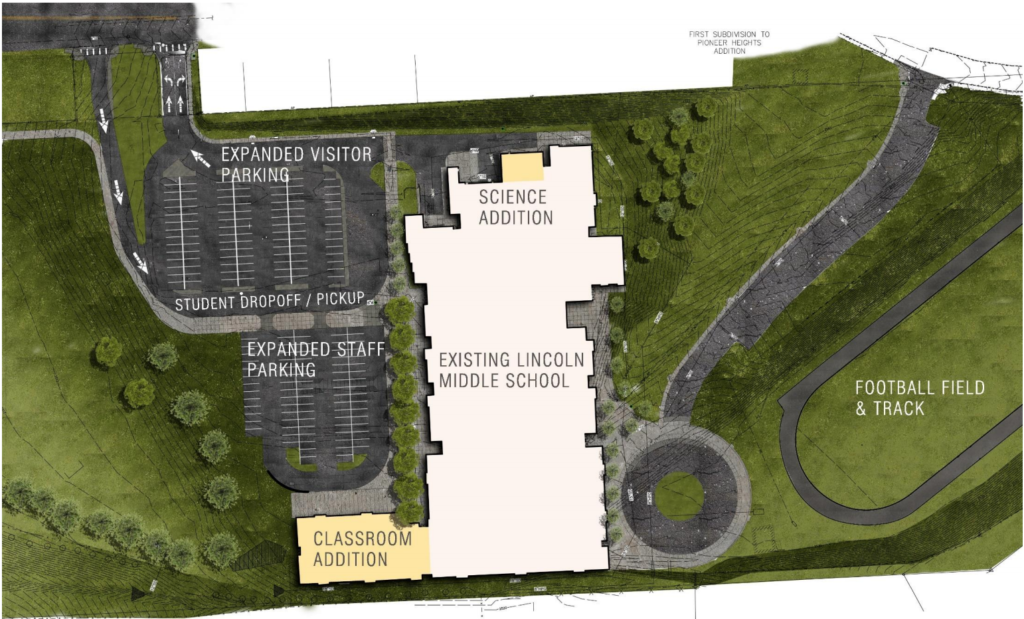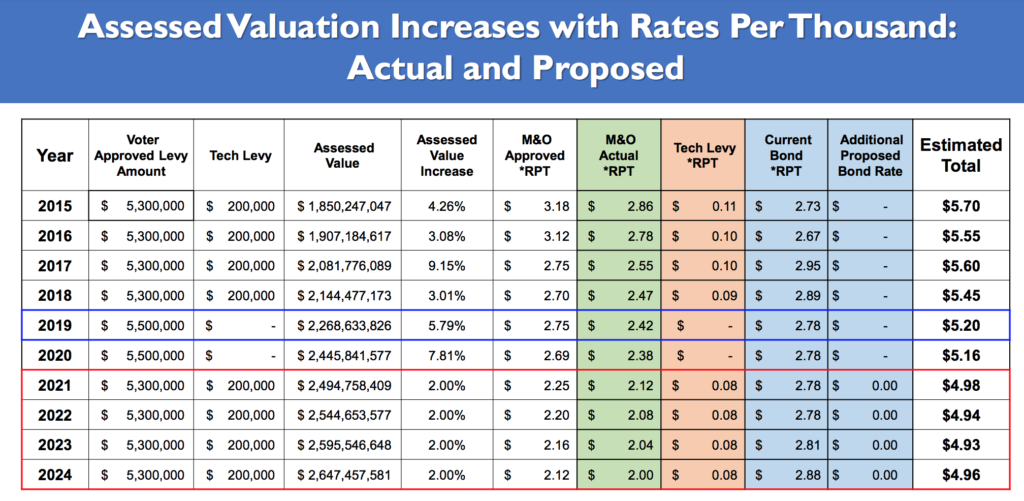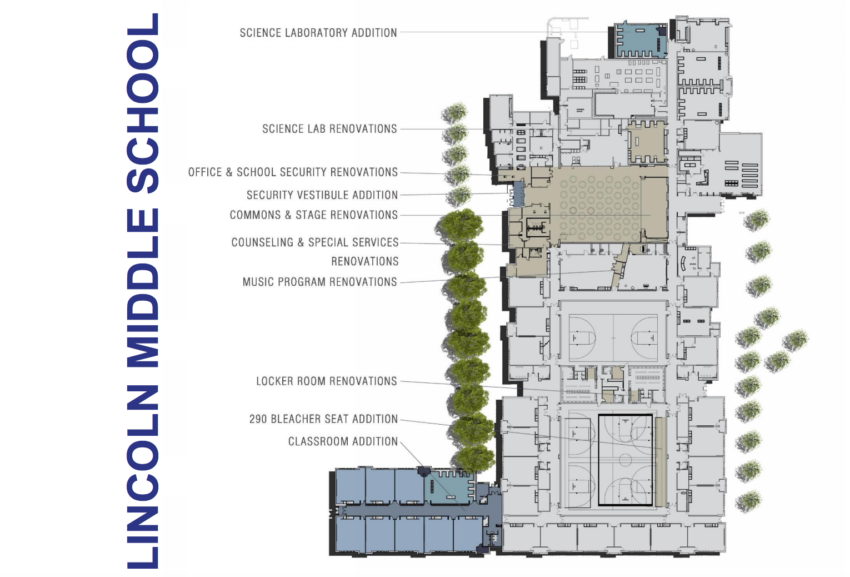Pullman school officials say rapid growth has contributed to overcrowding at Lincoln Middle School, but will also expand the district’s tax base as it asks voters to approve a $15 million construction bond and two replacement levies.
Ballots went out over the weekend for the Feb. 11 special election that will determine local funding support for districts throughout the county. Check your registration status here and review a sample ballot here. Registration is now available online until Feb. 3 and in-person through Election Day.
Pullman schools Superintendent Bob Maxwell said Lincoln Middle School currently serves more than 690 students in a building designed for up to 600 students. The building was most recently remodeled in 2004.
“The amount and the rate at which the population has grown, I don’t think they predicted that at all,” he said. “Since I’ve been here, there hasn’t been a year when we weren’t building something.”
Voters living within the Pullman School District will see three propositions for consideration — a $15 million bond to expand and remodel Lincoln Middle School, a $5.3 million educational enrichment (maintenance & operation) levy, and a $200,000 technology levy.
District officials say the bond and levies would replace previous property taxes at similar levels as older obligations expire at the end of 2020. If all three propositions pass, the owner of a $200,000 home would pay an estimated $996 in taxes to the district in 2021, about $36 less than this year.
The proposed 20-year bond would add eight new classrooms, restructure the common area to increase capacity, expand science labs, replace the building’s roof and realign the parking lot to simplify traffic flow. The bond would also pay to install air conditioning and filtration systems in the middle school as well as Franklin, Jefferson and Sunnyside elementary schools.
The bond proposal would require 60 percent approval to pass.
District Finance Manager Diane Hodge noted the enrichment and technology levies would collect the same level of funding provided by taxpayers since 2014. Those levies help pay for a variety of programs such as music, libraries, security, computer software, nursing staff and other services.
“That’s 10 years that we have not increased that levy,” she said. “We’ve been really good stewards of our funds. … There’s no increase in your tax rate.”
Those four-year replacement levies need over 50 percent approval to pass.
District officials will host a final information session for the public at 6:30 p.m. Wednesday in the Community Room at Pullman High School. Officials will go through this presentation and take questions from attendees. Read additional details below.

LINCOLN MIDDLE SCHOOL REMODEL
Lincoln Middle School, located along Crestview Street, was originally built in 1963 with space for about 350 students, officials say. Voters approved a $15.4 million bond to remodel the building for an expanded capacity in 2002, adding 70,000 square feet of new construction including additional classrooms and a second larger gym.
Hodge noted the 2004 remodel also included matching funds from the state. After receiving state grants to assist with the recent remodel of Pullman High School and the construction of Kamiak Elementary, the district does not expect to get any state funds on the newly proposed LMS remodel.
Ned Warnick, of Design West Architects, presented an update on the remodel design to the school board on Jan. 8, outlining proposed classroom additions as well as changes to the common areas, entrance security and parking lot alignment. You can watch his presentation in full here.
“We could have come up with a solution that was twice the size of this,” he said. “[But] we needed to address the real problems and not necessarily just the wants and the icing on the cake.”

District officials say eight additional classrooms would reduce class sizes. The project includes 11,000 to 14,000 square feet of new addition. The newer classrooms may become a sixth-grade specific wing that could also help reduce cross-through traffic in the school’s narrow hallways.
The remodel would also move a stage in the common area to increase seating capacity, Warnick said. The school now holds three lunch periods a day to rotate students through the space. The extra capacity would allow the school to move back to two lunch periods.
The plans also add locker room, rest rooms and administrative office capacity to accommodate up to 850 students. Preliminary plans estimated about 13,000 square feet would see renovations.
District officials say state enrollment projections estimate the school could see 800 students by as soon as 2030. After that, the district may look into development of a second middle school or bumping sixth grade back to elementary school depending on the resources available.
Warnick said parents may notice the biggest changes in the parking lot where traffic would be re-oriented to allow one-way flow along a larger drop-off area. Designs would provide more than 40 car lengths of curb for drop-off.
Update: A 72-page conditional use permit application to the city’s Board of Adjustment details construction and parking changes. City staff requested a traffic study.
In addition to structural changes, the bond would also pay to install cooling and air filtration in the middle school and older elementary schools. Pullman High and Kamiak Elementary already have such systems.
Maxwell argued that increased wildfire smoke and harvest dust have made it difficult to cool the buildings overnight and maintain healthy air quality.
“Some people thought that might be sort of an extravagant expenditure,” he said. “[We] really felt that was not a luxury.”
Construction work would take place primarily over this summer and next summer. Read the full 36-page project proposal from Design West here.
District officials convened a Capital Projects Advisory Committee of school staff and parents to help set the priorities for the remodel. Maxwell said that group of about 20 representatives spent several months deciding on how to approach the project. The committee offered its findings to the school board in August. You can watch that presentation here.
Committee member Cheryl Oliver said many in the community worried about voters rejecting any significant hike in taxes. She also noted that replacing the outgoing LMS bond would be an easier argument than trying to convince voters of an increased bond rate later.
“It was really important to us to not over-indulge,” she said of the committee’s deliberations. “We also didn’t want to raise tax rates too high … knowing there might be some other things down the road.”

ENRICHMENT AND TECHNOLOGY LEVIES
The owner of a $200,000 home in the Pullman School District will pay about $1,032 to the district this year in local property taxes. About $476 of that pays for the educational enrichment levy that expires this year. The rest goes toward bond payments on the old middle school, the Pullman High remodel and Kamiak Elementary.
The proposed levy on the ballot would renew that levy at an estimated $2.12 per $1,000 of assessed property value next year. The proposed technology levy, which was dropped the past two years and incorporated into the enrichment levy, would add another 8 cents per $1,000.
The two proposed levies on the upcoming ballot amount to $2.20 per $1,000 of assessed value next year. Hodge noted voters previously approved a levy rate of $2.75 per $1,000 of property value going into 2019.
(State legislators, trying to comply with the McCleary decision, capped local school levies at $1.50 per $1,000 of assessed value in 2017. But in 2019, they went back to raise that levy lid to $2.50 per $1,000 of assessed value.)
Maxwell emphasized the levies pay for essential classroom programs and services. He noted the district has moved to four-year levy cycles to reduce election costs and stabilize longer term budget planning.
“We have a long history of support from the community,” he said, “to address our needs and invest in our schools.”
The actual rate of enrichment levies collected by the district peaked in 2013 at $3.06 per $1,000 of assessed value and have since dropped to $2.42. Hodge argued that the community’s continued growth would maintain those trends.
“The more Pullman’s growing,” she said, “the less your taxes are going to be.”
Read more about the district’s levy history and programming here. Officials have also posted an FAQ page on the upcoming propositions.
Colfax, Colton, Endicott, Palouse, Rosalia, Tekoa and other regional school districts also have operational levies on the Feb. 11 ballot.
